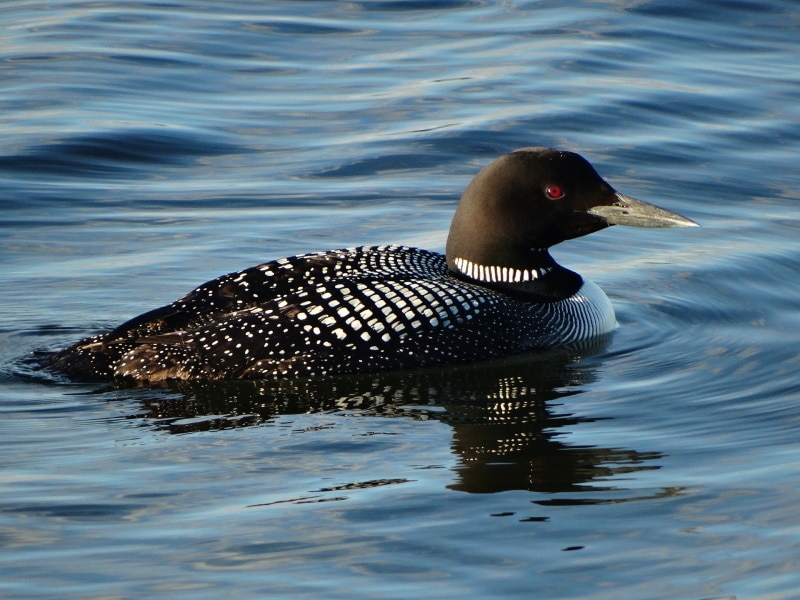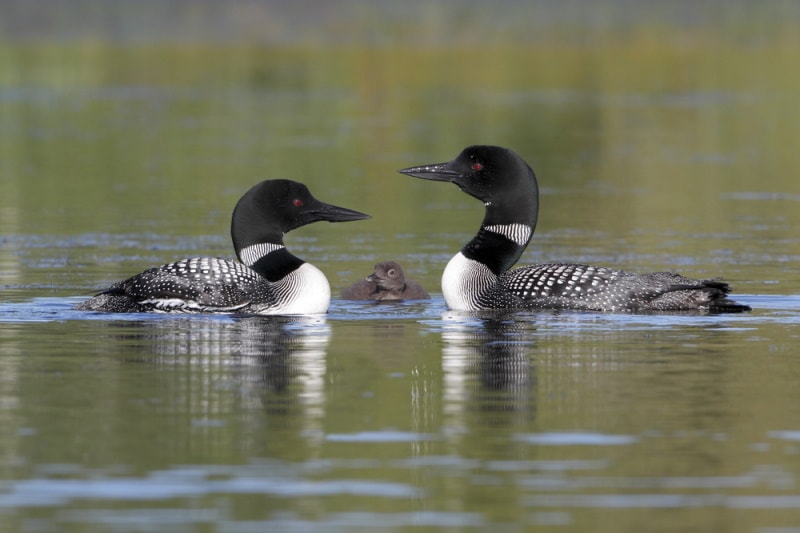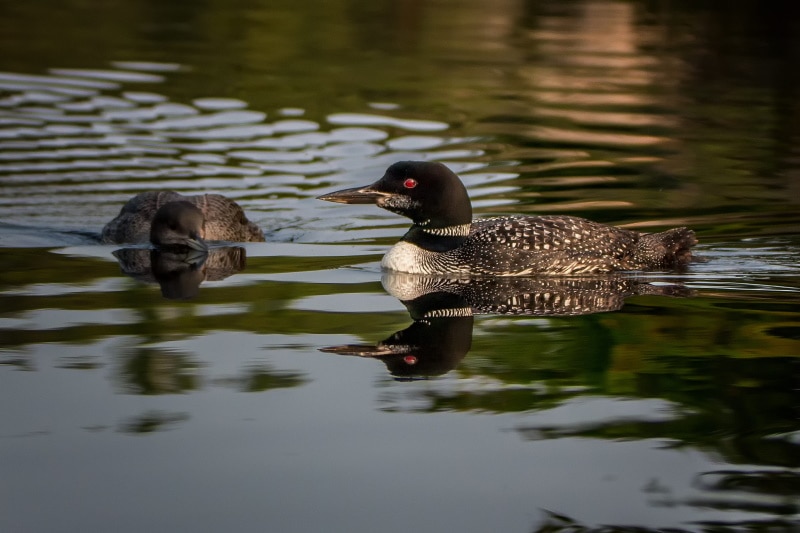Do Loons Mate for Life? The Interesting Answer!
Last Updated on

Many animals in the animal kingdom have interesting mating rituals. While some display strength or power to attract a mate, others sing beautiful songs or dances.
Loons don’t indulge in such shenanigans. When it comes to finding a mate, these large aquatic birds keep it simple. When they move to a new territory, they spend their sweet time finding a mate for the breeding season.
But do they stay with the same partner for their whole lives? No, loons do not mate for life.
If one loon dies, the other will find a new mate. Likewise, if a predator attacks the territory or another loon pair invades, the original pair may split up to find new mates and territories. Let’s learn more interesting things about these aquatic creatures.

Mating Behaviors of Loons
Like all birds, loons also have certain behaviors for finding mates and raising chicks. Here are some of them:

Finding the Mate
The courtship behavior of loons depends on their actions and signals. The two common behaviors include preening and mew calls.
A mew call is a long, high-pitched trill produced by both sexes. It is given during the breeding season when loons are near their nesting site. The mew call is a way of advertising their presence and location to other loons.
Preening is another behavior used by loons to attract mates. Preening is when a loon uses its beak to smooth down its feathers. The behavior is often done near the water’s surface and is thought to be a way of showing off their plumage.
After courting a mate, the male loon goes ashore and finds a copulation site. It’s a place where he can stand on land and mate with the female. The female loon then swims to the shore and exposes her white belly. After copulation, the male and female loon come back to the water. They also swim together for some time before they start to build a nest.
Sometimes, a loon may not be able to find a mate in its territory. Therefore, they will then travel to other territories to find a mate.
Building the Nest
Once a pair of loons has formed, they start to build their nest. The nest is usually built on a small island or peninsula near the water. The male loon gathers the materials while the female loon builds the nest.
The nest comprises vegetation, such as twigs, leaves, and moss. It’s usually lined with down feathers. The female loon lays two eggs a few days after the nest is made.
Both parents are highly protective of the nest during the incubation period. For example, loons let out a yodel call if predators come close to the nest. Loons also raise their chests and flare their wings to ward off predators.

Hatching and Raising the Chicks
Both parents take turns incubating the eggs. It takes about 28 days for the eggs to hatch.
Once the chicks hatch, they are covered in down feathers and can swim within a day. The parent loons carry the young on their backs for the first week. It helps keep them safe from energy loss and predation.
After the first week, the baby loons can start searching for fish. They also begin to swing on their own.
When Do Loons Mate?
Birds cannot just mate whenever they want to. Instead, there are specific times of the year when mating occurs, which is different for different species. In some cases, birds only develop the ability to mate once they reach a certain age. For example, juvenile bald eagles cannot yet mate successfully.
Or they may only mate during certain seasons when the temperatures are best for incubation and copulation. For example, loons prefer to mate in spring and summer. That’s around the May-June junction. They mate during this time so that they have a sufficient window for incubation and hatching before the lakes freeze over. Loons typically lay two eggs. It’s very rare for them to lay more.
Loons typically mate at night when there’s little to no human disturbance. They also have enough time at night to follow their mew call ritual.

Frequently Asked Questions
Do Loons Go Back to the Same Lake After Migration?
Loons are territorial birds, which means they generally stay in the same area throughout the year. However, they are known to migrate in response to changes in food availability or water levels. They return to the same lake yearly, where they establish a nesting territory.
How Long Do Loon Chicks Take to Grow Up?
Loon chicks take about 6 weeks to grow to the same size as their parents. However, they still have immature feathers at this point. Over time, they develop flight feathers, which are white and black. At 11 weeks, the loon chicks have feathers for flight. They also preen to remove down from their feathers.
Do Loons Abandon Their Nests?
Loons don’t typically abandon their nests. However, if the nest is disturbed or the eggs are lost, they will sometimes build a new nest. Sometimes, the water level drops, causing the loons to abandon their nests since they can’t reach them.
How Many Chicks Do Loons Have at Once?
Since loons lay two eggs, they usually have two chicks at a time. However, sometimes one of the eggs doesn’t hatch. In this case, the parents will focus on the one chick.


Final Thoughts
Loons have an interesting mating process that involves calling to find a mate. After a pair has been formed, the female will lay two eggs in a nest often made of plant material and down feathers. The parents will take shifts incubating the eggs, and once they hatch, the chicks can fly within a few weeks.
Loons typically live in pairs or alone but can be found in small groups during the non-mating season. As for monogamy, loons do not mate for life. Instead, they find new mates every season.
Featured Image Credit: Doug Smith, Pixabay
About the Author Jeff Weishaupt
Jeff is a tech professional by day, writer, and amateur photographer by night. He's had the privilege of leading software teams for startups to the Fortune 100 over the past two decades. He currently works in the data privacy space. Jeff's amateur photography interests started in 2008 when he got his first DSLR camera, the Canon Rebel. Since then, he's taken tens of thousands of photos. His favorite handheld camera these days is his Google Pixel 6 XL. He loves taking photos of nature and his kids. In 2016, he bought his first drone, the Mavic Pro. Taking photos from the air is an amazing perspective, and he loves to take his drone while traveling.
Related Articles:
10 Types of Hummingbirds in Arkansas (With Pictures)
8 Types of Hummingbirds in Nebraska (With Pictures)
5 Types of Hummingbirds in Idaho (With Pictures)
3 Types of Hummingbirds in Mississippi (With Pictures)
8 Types of Hummingbirds in Kansas (With Pictures)
5 Types of Hummingbirds in West Virginia (With Pictures)
5 Types of Hummingbirds in Ohio (With Pictures)
Where Do Nuthatches Nest? Nuthatch Nesting Habits Explained
